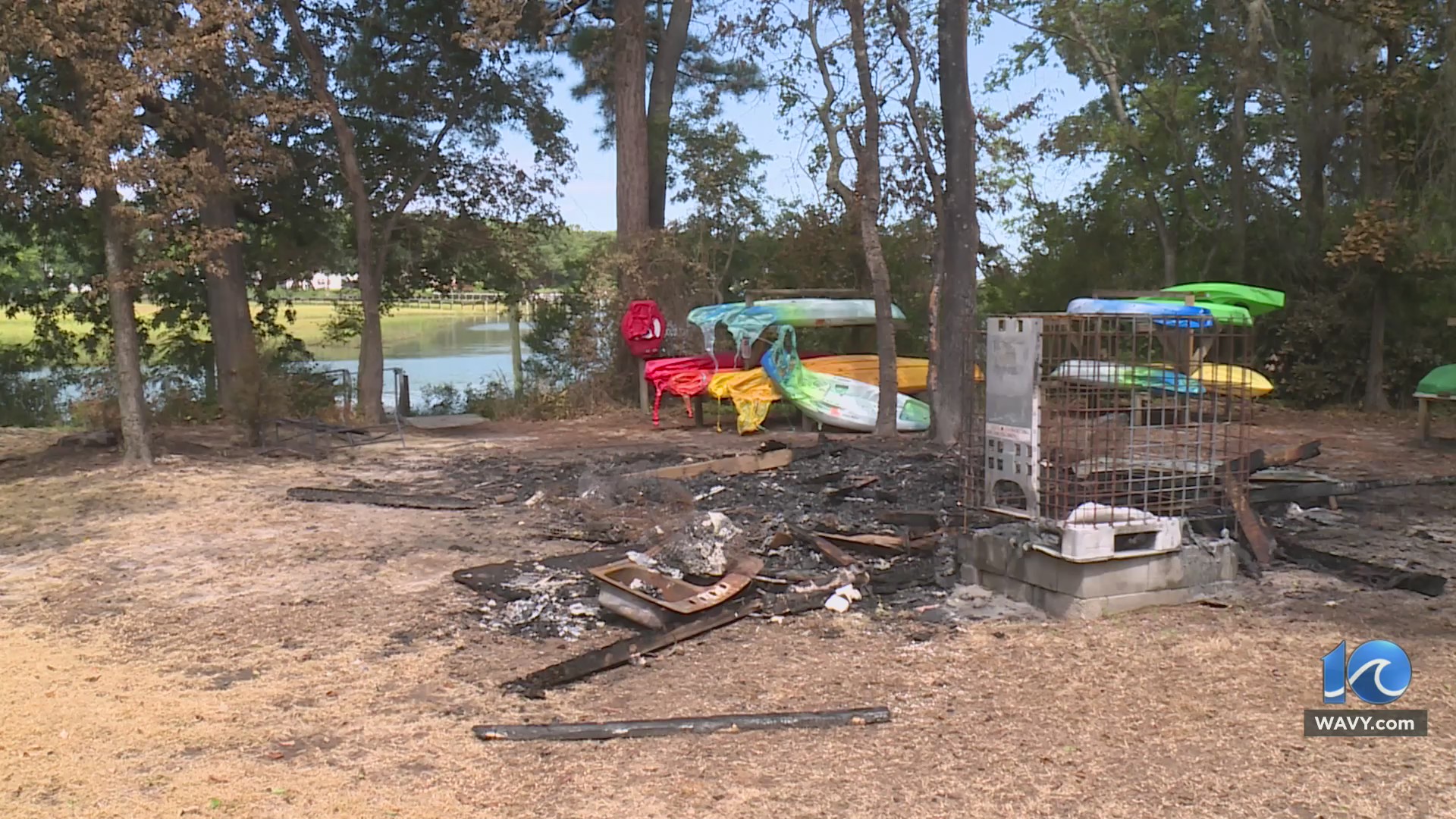UK Wildfires: Rare Wildlife Torched, Pushed To Extinction

Table of Contents
The Devastating Impact of Wildfires on UK Habitats
Wildfires in the UK are having a catastrophic impact on biodiversity, destroying vital habitats and pushing many species closer to extinction. The intensity and speed of these fires leave little chance for escape or recovery for many creatures.
Loss of Biodiversity Hotspots
Certain habitats are particularly vulnerable to the destructive power of wildfires. These biodiversity hotspots, once teeming with life, are being reduced to ash.
- Peat bogs: These vital ecosystems, home to a rich array of specialized species, are especially susceptible. Fire releases vast amounts of stored carbon into the atmosphere, exacerbating climate change. Species like the Drosera rotundifolia (round-leaved sundew) and various rare invertebrates are severely affected.
- Heathlands: Characterized by low-lying shrubs and unique flora and fauna, heathlands are easily ignited and burn rapidly. The natterjack toad (Epidalea calamita), a protected species, relies on these habitats for breeding and survival. The fire destroys their breeding pools and essential insect prey.
- Ancient woodlands: While seemingly resilient, ancient woodlands are vulnerable to severe wildfires, especially during prolonged droughts. The loss of mature trees, crucial for numerous species, disrupts the delicate ecosystem balance. Many rare insects, fungi, and plants face localized extinction.
The impact goes beyond immediate death. Fire destroys crucial food sources, nesting sites, and shelter, leaving surviving animals struggling to find resources and raising the risk of starvation and predation.
Fragmentation of Habitats
Wildfires don't just destroy habitats; they fragment them, isolating populations of wildlife and hindering their ability to thrive.
- Red squirrels (Sciurus vulgaris): Wildfires can sever connections between different red squirrel populations, limiting genetic exchange and increasing the risk of inbreeding.
- Adders (Vipera berus): The destruction of their hibernation sites and foraging areas through wildfire can lead to significant population decline.
This fragmentation reduces genetic diversity, making these populations more vulnerable to disease and environmental change. The long-term consequences for population viability are severe, potentially leading to local extinction of many species.
Increased Vulnerability to Invasive Species
The aftermath of a wildfire creates a breeding ground for invasive species. These opportunistic plants and animals can quickly colonize the burned areas, outcompeting native flora and fauna.
- Japanese knotweed (Fallopia japonica): This highly invasive plant thrives in disturbed habitats, rapidly spreading after wildfires and outcompeting native vegetation.
- Rhododendron ponticum: Similarly, this invasive shrub can rapidly colonize burned areas, altering the habitat and suppressing native plant growth.
This invasion further disrupts the ecosystem, compounding the damage caused by the wildfire and hindering the recovery of native species.
Specific Case Studies of Endangered Species Affected
Several endangered species are directly threatened by the increase in UK wildfires.
Dartford Warbler (Sylvia undata)
The Dartford warbler, a small bird reliant on heathland habitats, is particularly vulnerable to wildfires. These fires destroy their nesting sites and foraging grounds, significantly impacting their population. Recent fires have resulted in substantial local population decreases.
- Habitat Requirements: Heathlands with low-lying vegetation, providing nesting cover and insect prey.
- Conservation Status: Currently of conservation concern, populations are fragmented and vulnerable.
- Impact of Wildfires: Direct loss of habitat and breeding sites, reduced food availability, increased predation risk.
Smooth Snake (Coronella austriaca)
The smooth snake, a non-venomous reptile found in a variety of habitats including heathlands and woodlands, is threatened by the loss of suitable basking sites and hiding places due to wildfires.
- Habitat Requirements: Areas with diverse vegetation providing basking sites and shelter.
- Conservation Status: Listed as a species of conservation concern.
- Impact of Wildfires: Loss of shelter and basking sites, reduction in prey availability.
Sand Lizard (Lacerta agilis)
The sand lizard, a rare reptile found in specific sandy heathland habitats, is highly susceptible to wildfire. The destruction of these specialized habitats eliminates essential breeding and foraging grounds.
- Habitat Requirements: Open, sandy heathlands with sparse vegetation.
- Conservation Status: Listed as a protected species and of conservation concern.
- Impact of Wildfires: Direct loss of habitat, reduced prey availability, increased vulnerability to predation.
The Role of Climate Change in Increasing Wildfire Risk in the UK
The link between climate change and the increasing frequency and intensity of UK wildfires is undeniable.
Rising Temperatures and Droughts
Higher temperatures and prolonged droughts create tinder-dry conditions, making landscapes highly flammable.
- Increased frequency of heatwaves: The UK has experienced a significant increase in the frequency and intensity of heatwaves in recent years, creating ideal conditions for wildfires.
- Prolonged dry periods: Longer periods of dry weather lead to desiccation of vegetation, making it easier to ignite and burn more intensely.
Scientific data consistently shows a correlation between rising global temperatures and increased wildfire risk.
Changes in Vegetation
Climate change is altering vegetation patterns, making some areas more susceptible to wildfires.
- Increased dominance of dry grasses: Changes in rainfall patterns may lead to an increase in dry grasses, creating more flammable landscapes.
- Shifting species distributions: Changes in climate may lead to the expansion of flammable species into previously less flammable areas.
These changes in vegetation contribute to increased wildfire risk and make it more difficult to control fires once they start.
Impact of Human Activities
Human actions significantly contribute to the risk of wildfires.
- Discarded cigarettes: Negligently discarded cigarettes are a major cause of wildfires, often starting fires in dry grassland or heathland.
- Barbecues: Unattended or improperly extinguished barbecues can easily ignite dry vegetation.
- Land management practices: Poor land management practices, such as inadequate clearance of vegetation around buildings or insufficient firebreaks, increase the risk of uncontrolled wildfires.
These human-induced fires often occur in vulnerable areas, further endangering wildlife and their habitats.
Conservation Efforts and Mitigation Strategies
Combating the devastating effects of UK wildfires requires a multi-pronged approach.
Protecting Remaining Habitats
Protecting and restoring remaining habitats is crucial for the survival of many endangered species.
- Habitat restoration projects: Rewilding initiatives and restoration of degraded habitats are crucial in providing refuge for wildlife affected by fires.
- Creating firebreaks: Strategic placement of firebreaks can limit the spread of wildfires, protecting valuable habitats.
- Prescribed burns: Controlled burns, under careful management, can reduce the accumulation of fuel and prevent large, uncontrolled wildfires.
Raising Public Awareness
Education is key to preventing human-caused wildfires.
- Public awareness campaigns: Informative campaigns highlighting the dangers of wildfires and promoting responsible behaviour are vital.
- Community engagement: Working with local communities to develop wildfire prevention strategies is crucial.
Increased public awareness can significantly reduce the number of human-caused wildfires.
Government Policies and Funding
Strong government policies and adequate funding are essential for effective wildfire prevention and habitat restoration.
- Increased funding for wildfire prevention and response: Adequate resources are needed for firefighting efforts and habitat restoration.
- Development of national wildfire strategy: A comprehensive strategy is needed to coordinate wildfire prevention, response, and recovery efforts across the country.
- Strengthened regulations on land management: Implementing regulations to reduce the risk of wildfires through improved land management practices.
Conclusion
UK wildfires pose a catastrophic threat to rare wildlife, pushing many species towards extinction. The increasing frequency and intensity of these events, driven by climate change and human activity, demand urgent action. The loss of biodiversity hotspots, habitat fragmentation, and increased vulnerability to invasive species are all contributing factors to this crisis. By understanding the interconnectedness of climate change, human activity, and habitat destruction, we can implement effective conservation efforts and mitigation strategies. We must act now to protect these valuable ecosystems and the unique species they support. Help protect Britain's unique wildlife. Learn more about UK wildfires and how you can help by supporting organizations like [link to relevant conservation organization 1] and [link to relevant conservation organization 2]. Together, we can make a difference in combating UK wildfires and safeguarding our precious natural heritage.

Featured Posts
-
 Aces Roster Battle Undrafted Rookie Vs Top Draft Picks
May 13, 2025
Aces Roster Battle Undrafted Rookie Vs Top Draft Picks
May 13, 2025 -
 Philippine Midterm Elections 2024 Dutertes Strong Showing Against Marcos
May 13, 2025
Philippine Midterm Elections 2024 Dutertes Strong Showing Against Marcos
May 13, 2025 -
 Semiconductor Etf Sell Off Precedes Market Surge Analysis Of Investor Decisions
May 13, 2025
Semiconductor Etf Sell Off Precedes Market Surge Analysis Of Investor Decisions
May 13, 2025 -
 Pendekatan Sby Yang Bijak Mengatasi Konflik Myanmar Tanpa Menggurui
May 13, 2025
Pendekatan Sby Yang Bijak Mengatasi Konflik Myanmar Tanpa Menggurui
May 13, 2025 -
 Explaining Leonardo Di Caprios 5 Upcoming Movie Projects
May 13, 2025
Explaining Leonardo Di Caprios 5 Upcoming Movie Projects
May 13, 2025
